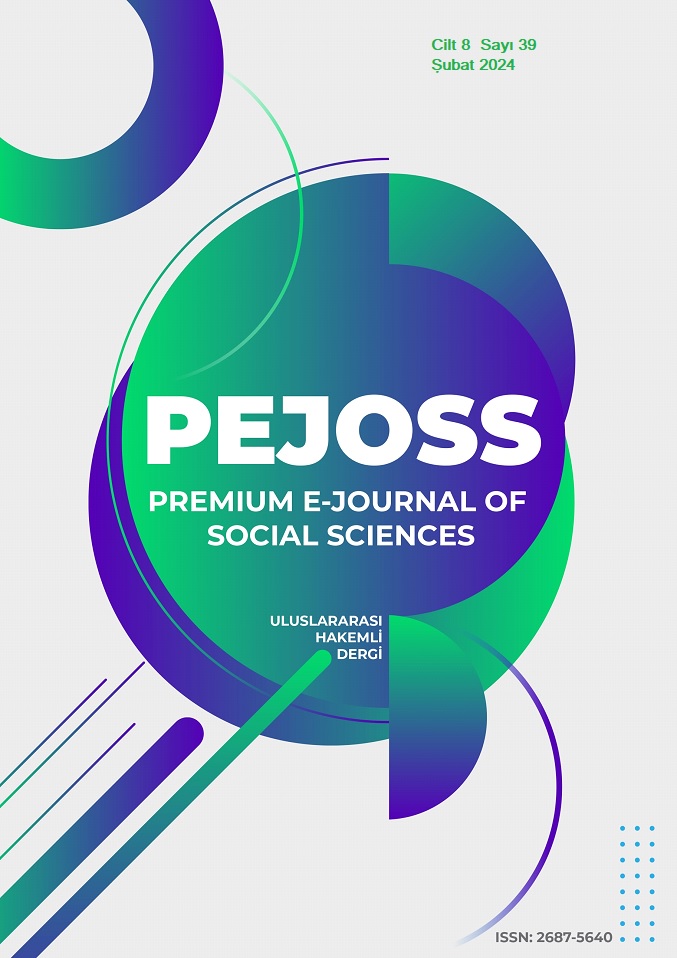Teachers' Perceptions About School Transparency
DOI:
https://doi.org/10.5281/zenodo.10784763Keywords:
Transparency, school, teacher, participation, accountability, information flowAbstract
This research was conducted to determine teachers' perceptions of the school’s transparency level. The research is in a quantitative and survey model. The research was carried out by reaching 176 teachers working in Denizli metropolitan districts with an easily accessible sample. In the study, the items that showed the highest level of school transparency among teachers were "The information shared by the school administration with the teachers is reliable." and “The information shared by the school administration with teachers is understandable.” substances in high levels. The lowest level is the "Intermediate" level: "The school administration shares details about the school's income and expenses with the teachers." It is in the article. While teachers' perceptions of the school transparency sub-dimensions, participation in decisions and information flow, and general school transparency were found to be at a "High" level, the accountability dimension was found to be at a "Medium" level. Accordingly, in the context of school transparency, teachers see their schools as being highly transparent in terms of participation in decisions, information flow, and in general, while they see them at a medium level in terms of accountability. It has been observed that teachers' school transparency levels do not differ and are similar according to teachers' gender, age, seniority, level of employment, marital status and career stages. However, it has been determined that teachers' school transparency levels do not differ according to their education levels and branches. According to teachers' school transparency levels, participation in decisions, information flow and general transparency levels according to the education level of teachers, it is seen that the perceptions of teachers with a master's degree on participation in decisions, flow of information and general school transparency are higher than teachers with a bachelor's degree. It was observed that teachers' school transparency levels showed a significant difference between classroom teachers and high school branch teachers in the accountability dimension according to branch, and the difference was high in favor of classroom teachers.
Downloads
References
Acar, A. ve Sevinç, İ. (2005). 1980 Sonrası Türk Kamu Yönetiminin Merkez Örgütünde Yapılan Reform Çalışmaları. Selçuk Üniversitesi Sosyal Bilimler Enstitüsü Dergisi, (13), 19-37.
Balkin, J. M. (1999). How Mass Media Simulate Political Transparency. Journal For Cultural Research, 3(4), 393-413.
Bentham, J., & Božovič, M. (1995). The panopticon writings. Verso Trade.
Bessire, D. (2005). Transparency: A Two-Way Mirror? International Journal of Social Economics, 32(5), 424-438.
Canöz, K. (2008). Kamuda Halkla İlişkilerin Yeni Yüzü: Bilgi Edinme Yasası. Selçuk İletişim, 5(3), 141-152.
Demirkan, A. (2016). Bağımsız Denetim Kuruluşlarında Şeffaflık Raporları. Muhasebe ve Denetim Dünyası, 1(46), 43-54.
Dinç, E., Abdioğlu, H. (2009). İşletmelerde Kurumsal Yönetim Anlayışı ve Muhasebe Bilgi Sistemi İlişki: İMKB–100 Şirketleri Üzerine Ampirik Bir Araştırma. Balıkesir Üniversitesi Sosyal Bilimler Enstitüsü Dergisi, (12), 157-184
Fairbanks, J., Kenneth D. Plowman, & Brad L. Rawlins. (2007). Transparency in Government Communication. Journal of Public Affairs, 7(1), 23-37
Grimmelikhuijsen, S., De Vries, F. & Zijlstra, W. (2018). Breaking Bad News Without Breaking Trust: The Effects of a Press Release And Newspaper Coverage on Perceived Trustworthiness. Journal of Behavioral Public Administration, 1(1), 1-10.
Helvacı, M. A., & Çetin, A. (2012). İlköğretim Okullarında Görev Yapan Öğretmenlerin Örgütsel Sinizm Düzeylerinin Belirlenmesi (Uşak ili örneği). Turkish Studies, 7(3), 1475-1497.
Kalmış, H. (2006). Kamuda Tahakkuk Esaslı Muhasebe Sistemi ve Türkiye’de Kamu Muhasebe Sisteminde Nakit Esasından Tahakkuk Esasına Dönüş Çalışmaları. Kamu Maliyesine Yeni Bakış, 233-247.
Kalaycı, Ş. (2016). SPSS uygulamalı çok değişkenli istatistik teknikleri. Asil.
Karasar, N. (2016). Bilimsel Araştırma Yöntemi, Nobel Yayınları
Kutukız, D. ve Öncü, A. (2009). Bağımsız Denetimin Anonim Ortaklıklarda Kurumsal Yönetimin Gelişmesine Etkisi. Muhasebe ve Finansman Dergisi, (41), 131-139.
Kuzey, P. (1999). Şeffaflık ve İyi Yönetişim. Cultural Values, 3(4), 446.
Levent, C. E. (2015). Küresel Finans Krizi Sonrasında Sermaye Piyasalarında Şeffaflığın Arttırılması: Türkiye Örneği. International Conference on Eurasian Economies.
Memişoğlu, D. ve Durgun, A. (2011). 2008 Ekonomik Krizi ve Türkiye’de Sağlık Sektörü Üzerine Etkileri. Süleyman Demirel Üniversitesi Sosyal Bilimler Enstitüsü Dergisi, (13), 81-100.
Mortaş, M., Şamil, S. (2020). Şeffaflığı Arttırmaya Yönelik Mekanizmalar ve Finansal Başarının Şeffaflık Üzerindeki Etkisi: BIST XKURY’de Bir Araştırma. MANAS Sosyal Araştırmalar Dergisi, 9(1), 341-359.
Murray, K. & White, J. (2005). Ceos’ Views On Reputation Management. Journal Of Communication Management, 9(4), 348-358.
Özbay, D. (2019). Türkiye’de Finansal Olmayan Raporlama ve Gelişim Trendi. Uluslararası Yönetim İktisat ve İşletme Dergisi, 15(2): 445-462.
Özşahin Koç, F. ve Özkan, A. (2016). Şeffaflık İlkesinin Gereği Olarak Gönüllü Risk Açıklama: İngiltere Örneği. World of Accounting Science, 18.
Rawlins, W. K. (2009). Narrative Medicine And The Stories Of Friends. Journal of Applied Communication Research, 37(2), 167-173.
Resick, C. J., Hanges, P. J., Dickson, M. W., & Mitchelson, J. K. (2006). A Cross-Cultural Examination Of The Endorsement Of Ethical Leadership. Journal of Business Ethics, 63(4), 345-359.
Tosun, A., & Çelik, K. (2022). Okul Şeffaflık Ölçeği: Geçerlik ve Güvenirlik Çalışması. Mehmet Akif Ersoy Üniversitesi Eğitim Fakültesi Dergisi (64), 102-126. https://doi.org/10.21764/maeuefd.1058406
Yılmaz, Z. (2018). Denetim Kalitesi ve Şeffaflık. İnsan ve Toplum Bilimleri Araştırmaları Dergisi, 7(4), 3059-3087.
Downloads
Published
How to Cite
Issue
Section
License
Copyright (c) 2024 Premium e-Journal of Social Science (PEJOSS)

This work is licensed under a Creative Commons Attribution 4.0 International License.


